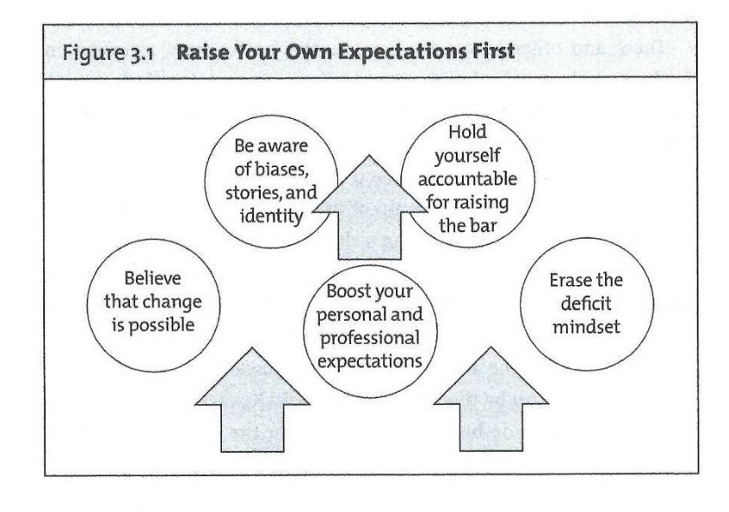Succeed with Students Who Need You Most
Teaching with Poverty and Equity in Mind: Succeed with the Students Who Need You Most
By Eric Jensen
(ASCD, 2022 – Learn more)
Reviewed by Anne Anderson

Readers will not find cutesy ideas or ready-to-use lesson plans. Dr. Jensen puts teachers on notice on page 4:

Start with Yourself
The first chapter, “Start with Yourself,” focuses on recognizing and developing the equity mindset. “Equity refers to the mindset, policies, and approaches used to ensure that every student gets what they need to succeed.” (p. 17) In the chapters that follow, Jensen shares perspectives, tools, and action steps to move educators toward an equity framework of teaching. (FYI: Be sure to complete the T/F quiz on page 8.)
Chapter 2, “Conscious Connections,” begins with these two questions, most often unspoken, on students’ minds:
►“Is my teacher an ally or an adversary?”
►“Does my teacher see, hear, and respect me with empathy and show that they care about how I am doing?”
As part of his storytelling, Jensen shares what one teacher did to demonstrate that she is an ally, not an adversary. “This high-equity teacher does whatever it takes.” (p. 27) (FYI: Don’t skip the Debrief Time activity.)
Readers are reminded of this important mindset: “Your students need to develop a relationship with at least one primary caregiver for normal social and emotional development.” (p.28) Dr. Jensen suggests engaging relationships on three levels:
Level 1: Be Courteous and Curious
Level 2: Support Students with Empathy
Level 3: Be a Deep Ally
With each level he provides specific – and achievable – actions that work.
Within Chapter 2, the author challenges readers to examine the impact of their relationships with students and their bias mindset. (FYI: Complete the de-bias activity in Appendix C.)
Raise the Roof
Jensen reminds us in Chapter 3, “Raise the Roof,” to bring our A-game to class and make sure “students know that nobody’s going to fail on your watch.” (p.48) Throughout the book he uses current data to support the five actions shown in Figure 3.1 (p. 49). Once again, he offers specific, achievable steps to take.
Get ready! This book can propel an individual teacher or a team forward in creating an equitable environment. “To reach students living in poverty, make your class an inclusive in-group where all students feel safe and included.” (p. 83)
Chapter 5, “Rousing Relevance,” is filled with tools to end compliance behaviors. It opens with these student questions:
►“Does this work have real value (relevance), and does my teacher share the why with me every day?”
►“Will my teacher keep me connected, captivated, and engaged?”
►“Will I be bored and tired or energized and celebrated each day in class?”
Jensen begins with a true story using his personal acronym, E-R-I-C, “Engagement, Relevance, Identity, and Connection.” (p. 86) (FYI: Complete the debrief activity.)
He offers seven ways to rouse relevance in the classroom. My personal favorite is the last one: Social Nudging (Giving Students Power to Lead Their Peers). Jensen shares how he created student groups (teams) and assigned roles which allowed them to take ownership. Visit www.jensenlearning.com/equity-resources for a list of energizers and buy-in questions.
“This chapter is about more learning and less friction,” he tells us. Stressed teachers and stressed students are a disaster waiting to happen! And there you have it — the purpose of Chapter 7, “From Discipline to Coaching.” He provides tips for self-regulating stress and for reducing the stress level in the classroom. Within this chapter readers find numerous suggestions of what to say.
Jensen suggests these conditions to maximize rapid, positive brain changes (p. 155) and helps us understand what he means by each:
- Remember to use priming.
- Engage in quick, repetitive rigor.
- Utilize emotional “lock-ins.”
- Ensure downtime.
- Include mental training
A cheerleader with statistics
I have heard Eric Jensen speak. I have heard him say, “Stop the excuses” – not as a scolding critic but as a colleague. That’s the premise of his book. He knows students. He knows teachers. And he knows the research and data. For me, he’s always been like a cheerleader with statistics. Use the specific tools and strategies he shares in his latest book. Additional resources are available at www.jensenlearning.com/equity-resources.
A savvy school leader will purchase this book and then get busy doing many tiny high-impact things to bring out the best in teachers and students.

Calendar Celebrations: December, January, February is part of Anne Anderson’s trilogy on quick, engaging activities and resources for months of the school year. (For MiddleWeb she wrote about selected winter celebrations here, about fall here, and about spring here.) Anne has also published articles in IDEAS Plus and Voices from the Middle, publications of the National Council of Teachers of English. She is a frequent reviewer of professional books for MiddleWeb.com.































